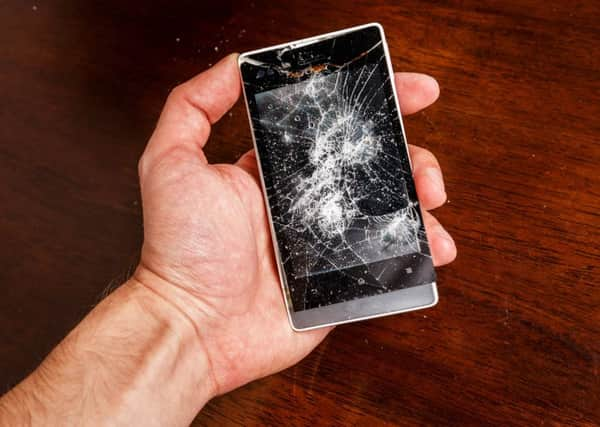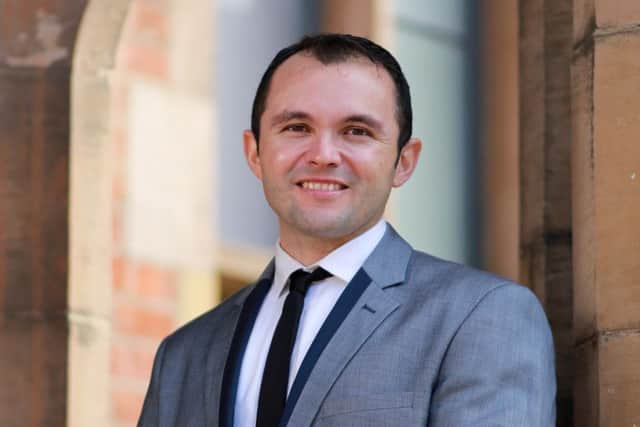Queen's research could lead to a breakthrough on broken screens


However a Queen’s University researcher may have found a solution to the misery of broken smartphone and tablet screens.
Dr Elton Santos has led an international team of scientists to the discovery of a new material which could both reinforce the devices.
Advertisement
Hide AdAdvertisement
Hide AdCurrently, most parts of a smart phone are made of silicon and other compounds, which are expensive and break easily.


With almost 1.5 billion smart phones purchased worldwide last year, manufacturers are on the lookout for something more durable and less costly.
Dr Santos from Queen’s University’s School of Mathematics and Physics has been working with a team of top-notch scientists from Stanford University, University of California, California State University and the National Institute for Materials Science in Japan, to create new dynamic hybrid devices that are able to conduct electricity at unprecedented speeds and are light, durable and which are easy to manufacture on a large scale.
The team found that by combining semiconducting molecules C60 with layered materials, such as graphene and hBN, they could produce a unique material technology which could revolutionise the concept of smart devices.
The resulting substance has no name as yet.
Advertisement
Hide AdAdvertisement
Hide Ad

Dr Santos explained: “Our findings show that this new ‘miracle material’ has similar physical properties to silicon but it has improved chemical stability, lightness and flexibility, which could potentially be used in smart devices and would be much less likely to break.
“The material also could mean that devices use less energy than before because of the device architecture so could have improved battery life and less electric shocks.”
He added: “This cutting-edge research is timely and a hot-topic involving key players in the field, which opens a clear international pathway to put Queen’s on the road-map of further outstanding investigations.”
The project initially started from the simulation side, where Dr Santos predicted that such assembly of hBN, graphene and C60 could result in a solid material with remarkable new physical and chemical properties.
Advertisement
Hide AdAdvertisement
Hide AdThen, he talked with his collaborators Professor Alex Zettl and Dr Claudia Ojeda-Aristizabal at the University of California, and California St University in Long Beach (CA) about the findings.
The experiments throughout the project bore out the theory.
Dr Santos said: “It is a sort of a ‘dream project’ for a theoretician since the accuracy achieved in the experiments remarkably matched what I predicted and this is normally easy to find.”
The findings have been published in the prestigious ACS Nano journal.